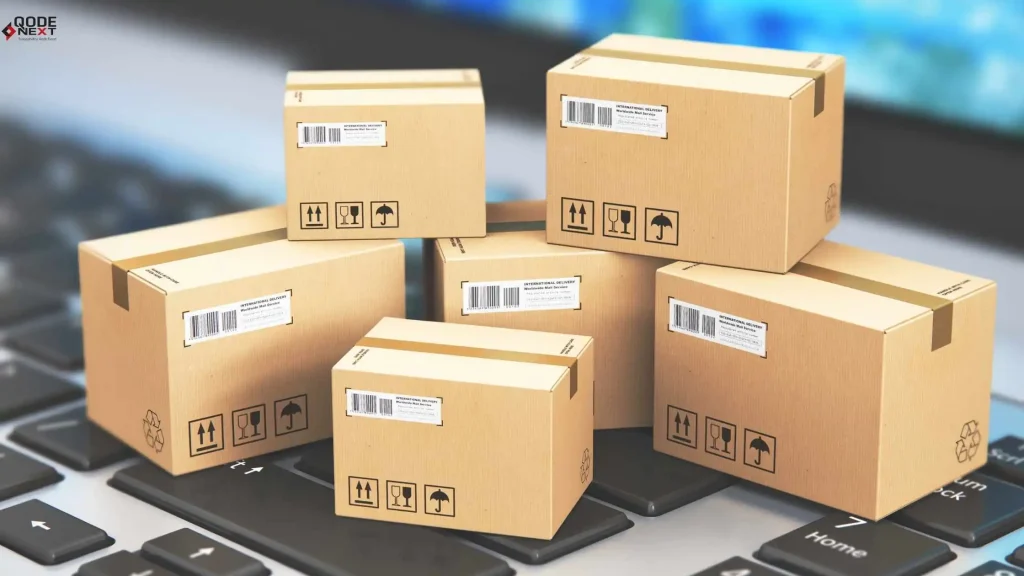In the eCommerce industry, residential shipping has become an essential component of logistics, ensuring that goods reach customers directly at their doorsteps. Unlike commercial shipping, which primarily caters to businesses and warehouses, residential shipments are designed to deliver packages to individual homes, apartments, and private addresses.
With the rise of online shopping, consumers expect quick, convenient, and secure delivery options. However, residential deliveries come with their own set of challenges, such as higher costs, last-mile delivery issues, and security concerns. This blog explores what residential deliveries are, how they work, their advantages, challenges, and best practices to improve efficiency.

What is Residential Shipping?
Residential shipment refers to the process of delivering goods to a home or private address rather than a business location. Carriers such as FedEx, UPS, USPS, and DHL offer specialized logistics shipping services tailored to consumer needs. Since residential areas have different logistical challenges, carriers may charge additional fees compared to commercial deliveries.
Key Characteristics of Residential Shipping
- Direct-to-home delivery for individual customers
- Higher shipping costs due to last-mile delivery network
- Flexible delivery schedules, including evenings and weekends
- Smaller vehicles for navigating residential streets
- Additional security measures to prevent package theft
How Residential Shipping Works
The process of e-commerce shipping involves multiple steps, ensuring the safe and timely delivery of products to customers. Here’s a detailed breakdown of how it works:
Step 1: Order Placement
A customer places an order online, providing their residential address and selecting a preferred shipping method.
Step 2: Order Processing & Packaging
Retailers process the order, package the item securely, and prepare it for shipping. Since residential shipment involves direct delivery, packaging must be durable to withstand transit.
Step 3: Carrier Selection & Pickup
The retailer chooses a shipping carrier based on factors like cost, delivery speed, and location. The package is then picked up from the warehouse or fulfilment centre.
Step 4: Transit & Last-Mile Delivery Hub
Once in transit, the package moves through various distribution centres. The final stage, known as last-mile delivery, is where the package is transported to the customer’s doorstep.
Step 5: Delivery Completion & Confirmation
The carrier completes the delivery, sometimes requiring a signature or providing photo confirmation. Customers can track their shipments in real time using tracking numbers.
Advantages of Residential Shipping
Here are the top benefits of residential freight shipping:
1. Convenience for Consumers
The best e-commerce shipping solutions allow customers to receive their packages directly at home, eliminating the need to visit a physical store or pickup location.
2. Expanded Business Reach
e-commerce businesses can serve a wider audience across different locations without needing physical storefronts.
3. Flexible Delivery Timings
Many carriers offer evening and weekend delivery options, making last-mile shipping more convenient for people with busy schedules.
4. Improved Tracking & Transparency
Real-time tracking, delivery notifications, and estimated arrival times enhance the customer experience.
Challenges of Last-Mile Shipping
Here are the top challenges faced by shipping companies:
1. Higher Shipping Costs
Since residential delivery involves delivering smaller packages to multiple locations, carriers charge additional fees for the extra resources needed.
2. Address Accuracy Issues
Incorrect addresses lead to failed deliveries, increasing costs for businesses and frustrating customers.
3. Security Risks & Piracy
Packages left unattended at doorsteps are vulnerable to theft, making security a growing concern.
4. Last-Mile Delivery Complexities
Navigating through residential neighborhood’s, apartment complexes, and gated communities makes last-mile delivery time-consuming and expensive.
Best Practices for Efficient Residential Shipping
To overcome challenges and optimize delivery, businesses and carriers can adopt the following best practices:
1. Partner with Reliable Shipping Carriers
Choosing the right e-commerce shipping software solutions is critical for ensuring timely and secure deliveries. Consider factors like delivery speed, coverage area, and pricing. Some of the best carriers for residential shipping include:
- UPS Residential Ground – Reliable for standard home deliveries
- FedEx Home Delivery – Offers weekend delivery with tracking
- USPS Priority Mail – Cost-effective for lightweight shipments
- DHL eCommerce – Great for international residential deliveries
2. Offer Multiple Delivery Options
Providing customers with flexible delivery choices improves satisfaction. Some key options include:
- Standard Delivery – 3 to 7 business days
- Expedited Shipping – 1 to 2 business days for urgent needs
- Scheduled Delivery – Allows customers to choose a convenient delivery time
3. Optimize Address Accuracy with Validation Tools
Incorrect addresses lead to failed deliveries and increased costs. Businesses should implement automated address validation tools like:
- Google Address Autocomplete – Reduces errors in customer inputs
- UPS Address Validation API – Ensures deliverability before shipping
4. Improve Packaging for Secure Deliveries
To prevent damage during transit, invest in high-quality packaging. Best practices include:
- Use sturdy boxes that withstand handling
- Add protective cushioning for fragile items
- Consider tamper-proof packaging to prevent theft
5. Implement Real-Time Tracking & Notifications
Customers appreciate transparency in deliveries. Businesses should offer:
- Real-time tracking links for all orders
- SMS and email notifications for shipping updates
- Proof of delivery images for added security
6. Reduce Shipping Costs with Bulk Discounts & Carrier Negotiations
Businesses can lower residential shipping expenses by:
- Negotiating bulk shipping rates with carriers
- Using fulfilment centres closer to target customers
- Offering free shipping for minimum order values to offset costs
7. Secure Deliveries with Smart Lockers & Signature Confirmation
To prevent package theft, consider:
- Smart parcel lockers in apartment buildings or retail locations
- Signature-required deliveries for high-value items
- Contactless delivery options to improve security
8. Implement Sustainable Shipping Practices
Eco-conscious customers appreciate green shipping initiatives, such as:
- Using biodegradable or recyclable packaging
- Consolidating shipments to reduce carbon footprint
- Partnering with carriers that use electric or fuel-efficient delivery vehicles
FAQs – Residential Shipping
How do residential shipments differ from commercial shipping?
Residential shipments deliver packages to individual homes, while commercial shipping delivers to businesses. Residential deliveries often have higher costs and require different handling.
Why do carriers charge extra for last-mile shipping?
Carriers impose additional fees because residential shipping requires more resources, smaller vehicles, and complex last-mile navigation.
What are the best carriers for e-commerce shipping?
UPS, FedEx, USPS, and DHL are among the top carriers offering reliable residential shipping services.
How can businesses lower their shipping costs?
Businesses can reduce costs by negotiating bulk shipping rates, validating addresses to avoid failed deliveries, and using fulfilment centres near customers.
Can customers track their residential shipments in real time?
Yes, most carriers offer real-time tracking through their websites and mobile apps, providing updates on shipment status.
Conclusion
As e-commerce continues to grow, residential shipping plays a crucial role in delivering goods efficiently and securely to customers. While it presents challenges like high costs and security risks, businesses can improve their e-commerce shipping process by partnering with reliable carriers, optimizing address accuracy, offering flexible delivery options, and implementing tracking systems.
By following best practices, companies can enhance customer satisfaction, streamline logistics, and make shipping a seamless experience for all.
Would you like expert guidance on optimizing your supply chain strategy? Reach out to Qodenext today.






